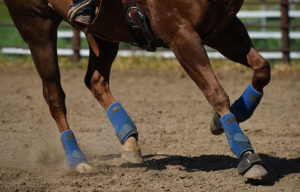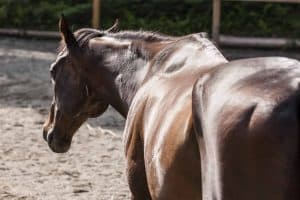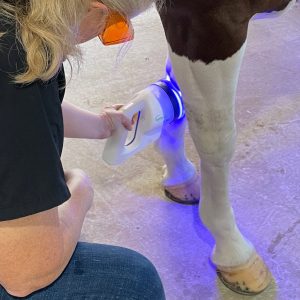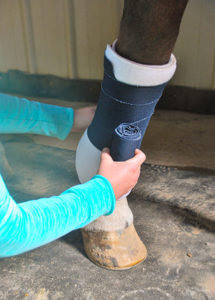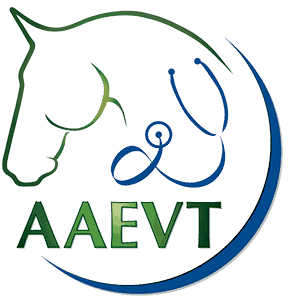When in Doubt, Turn Out
By Hilary M. Clayton, BVMS, PhD, Dipl. ACVSMR, MRCVS
Horses are products of their genetics and the environment we provide for their growth and development. One of the most important choices we make when managing horses during the first few years of their life is whether they are stabled or turned out, and for how long. Different types of exercise are necessary to stimulate adaptation of the different locomotor musculoskeletal tissues (bone, articular cartilage, muscle, ligament, and tendon), and these tissues are most responsive at different ages. Therefore, young horses need a sufficient amount of appropriate types of exercise at the right times in their lives to fulfill their athletic potential and reduce their risk of injury.
Researchers have shown that 24-hour-a-day turnout during the early months of a foal’s life is the gold standard for developing a strong, resilient locomotor system. Management approaches in which foals are kept in stalls even for part of the day are less effective in stimulating optimal locomotor tissue strength. This is especially true for the superficial digital flexor tendon (which runs from the back of the knee all the way down to the back of the pastern in each limb and acts as a “sling” to support the fetlock to help it bear the animal’s weight) and the suspensory ligament (which runs down the back of each cannon bone). Both structures are frequently injured in equine athletes. These soft tissues reach their maximal strength by the time the horse is 2 years of age, after which they are no longer able to adapt to the stimulus of conditioning.
Another benefit of turnout relates to a horse’s development of surefootedness. Turnout stimulates the proprioceptors (sensory mechanisms that tell the horse where his feet and body parts are) in the hooves, joints, muscles, and tendons that provide information about the body’s position and movements. The neuromuscular system responds to the proprioceptive information by causing appropriate body and limb movements. Ideally, during their first two years, horses should be exposed to different types of footing and terrain to enhance their proprioceptive awareness and hone their reflex responses so they can adapt to uneven ground without tripping or stumbling
Create a free account with TheHorse.com to view this content.
TheHorse.com is home to thousands of free articles about horse health care. In order to access some of our exclusive free content, you must be signed into TheHorse.com.
Start your free account today!
Already have an account?
and continue reading.
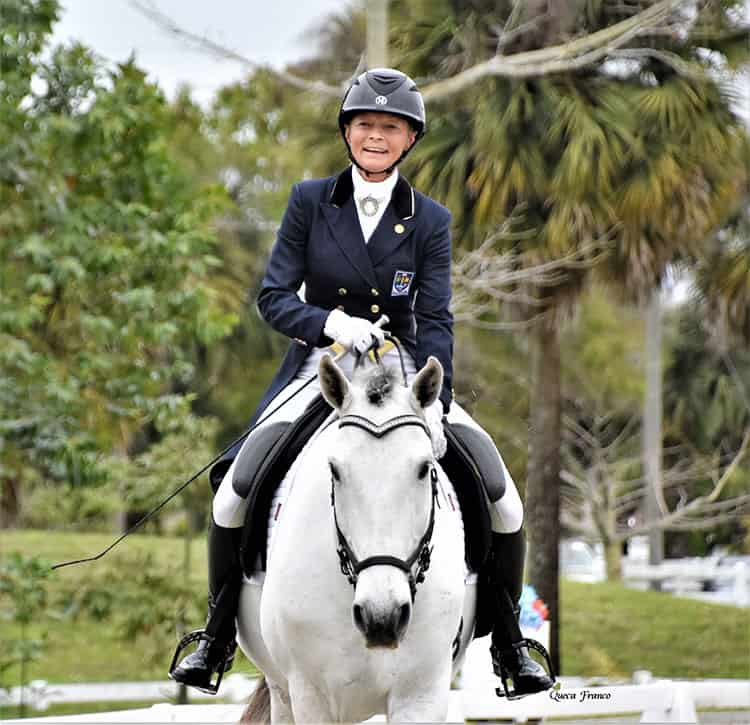
Written by:
Dr. Hilary Clayton, BVMS, PhD, Dipl. ACVSMR, FRCVS
Related Articles
Stay on top of the most recent Horse Health news with


